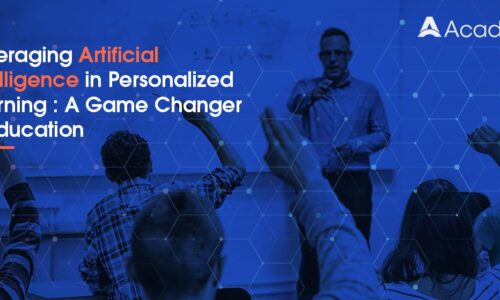- Acadally
- 0 Comments
- 5108 Views
Education technology is transforming classrooms, homes, and learning spaces worldwide, but with this transformation comes a set of significant challenges. A good example of the fundamental issues that education technology can solve is AcadAlly, an AI app that personalizes learning paths for students. It shows us how innovation can lead to improvements in learning. At the same time, education technology is facing many challenges that must be addressed to move forward.
1. Lack of Personalization
One of the major challenges faced by EdTech is that many AI app for students are simply providing the same learning experience for every student. Each student perceives information differently and learns at a different pace. Thus, one single method will not suffice. To do this, you need smart systems that can adapt to the learning style and needs of every student.
2. Engagement and Motivation
Keeping students engaged in an online learning environment is not that easy! Many lose interest in a learning activity if it has a boring feel or seems disconnected from real life. In addressing such an issue, EdTech providers should utilize motivational strategies like gamification, interactive activities, and real-time rewards.
3. Teacher Readiness and Training
Teachers are the bridge that connects technology with students; however, many see themselves as not adequately trained to use new tools effectively. Attending this gap frustrates the teachers and ends up with poor technology use. Hence, this needs to be addressed by designing an online learning app for students that are easy and simple to use, through adequate teacher training.
This can be done through multiple workshops, practical experience, and support that is readily accessible. When teachers trust technology, they unleash its full power for the students, creating better transformational learning experiences.
4. Real-Time Feedback Challenges
Students need instant feedback to know if they are doing well and what to improve. In traditional education systems, feedback typically arrives too late to be useful. Likewise, many online tools fail to provide real-time, actionable insights. The best solution is to use an online AI learning app for students that can automatically evaluate student submissions and provide immediate personalized suggestions.
5. Balancing Gamification with Real Learning
The introduction of games and rewards makes learning entertaining and fun, but excessive gamification can sometimes distract learners from the real learning. Students might be point and badge chasers, without regard for the learning content. The crux of the matter is that well-designed gamified systems should reward true mastery and genuine effort put forth by the learner.
6. Data Privacy and Security
Education technology involves collecting sensitive information about students, and protecting that data must be a top priority. Many parents and schools worry about how personal information is stored and used. To overcome this issue, education technology companies need to build secure platforms, follow strict data protection regulations, and communicate their privacy policies. Students and parents should always feel safe when using digital learning platforms, so they can trust the system and fully engage with it.
7. Internet and Device Dependency
Not all students have equal access to stable internet connections or modern devices, especially in rural or low-income areas. This digital divide creates unfair advantages and leaves some students behind. Education technology providers need to design solutions that work offline or with limited connectivity and are compatible with a range of devices.
8. Content Quality and Relevance
Even with the best technology, learning will fail if the content is outdated, irrelevant, or poorly designed. Many platforms focus on delivering quantity instead of quality. Solving this problem requires concentrating on high-quality, well-researched content that stays up to date with curriculum changes and real-world skills. Content should also be adapted to different learning levels so that every student, whether a beginner or advanced learner, finds valuable resources that match their needs.
9. Measuring Learning Outcomes
A big challenge in education technology is proving that students are learning and improving. Standard test scores often fail to capture real growth, and many platforms lack strong systems to track academic development. Overcoming this requires smarter assessments that measure accurate understanding over time.
Conclusion
Education technology has the power to transform learning, but only if we address these challenges with smart, thoughtful solutions. AI apps like AcadAlly show how AI, real-time feedback, and gamification can make learning personal, fun, and effective.
The future of education belongs to systems that adapt to each learner’s needs, empower teachers, and involve parents at every step. If we work together to solve these problems, education can become truly accessible and powerful for every student.








